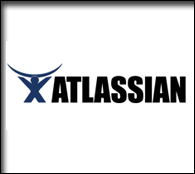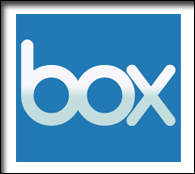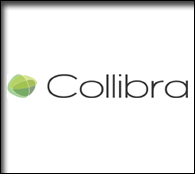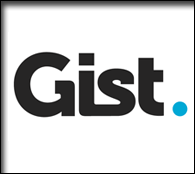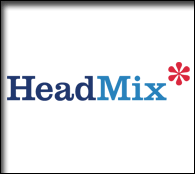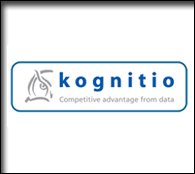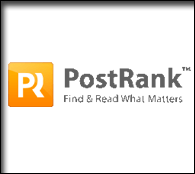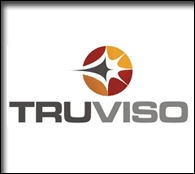Archive for August, 2009
On the “synaptic web”
by Eric Norlin on Aug.31, 2009, under Uncategorized
Chris Saad pointed me to a piece that he and some cohorts have been working on - a fascinating read called, “The Synaptic Web.” Before you start groaning about *yet another* naming convention (the real-time web, web 3.0, etc), take a second and go read it (I’ll wait here).
Metaphors, analogies and conceptual frameworks for viewing something are important. Would email ever have worked if someone hadn’t been able to say, “it’s like sending mail, but over the internet — email” -of course not. The act of sending a letter made sense. And it helped explain “email” to people the world over.
So, in our own little way, we’re always looking for ways to describe the problems that Defrag is covering, and this synaptic web piece does a damn good job of nailing down a few things. For example:
1. Imagine that instead of a web of pages, or a web of communication, we’re building a web that is analogous to the way the human brain works (a synaptic web).
2. In that web, plasticity (the speed and flexibility of connection making) and the synapse (the bridge that occurs between the gap of two neurons) are critical to forming bundles of connections (the thing that scientists believe determines “intelligence).
I love the analogy - and I think the guys there are on to something. There is something different going on, and it’s not *just* about “real-time streams” or widgets or twitter or what have you; there’s a bigger picture being painted. That bigger picture is about a web of connections (of data, people, information, profiles, communities, etc) and how those connections bundle and un-bundle to form ever-changing, emergent properties that provide intelligence (to both individuals and groups).
Defrag is concerned with understanding that shift.
I’d be remiss if I didn’t add that early bird pricing ends today. Save yourself $500 bucks. Join us.
Crossing the Social Media/E2.0 Chasm
by Eric Norlin on Aug.29, 2009, under Uncategorized
Gia Lyons put up a very interesting blog post yesterday entitled, “Social Media is from Mars, Enterprise 2.0 is from Venus.” In it, she talks about her experience at a recent conference, where she experienced the gap between what we think of as “social media” and what we think of as “enterprise 2.0.” Gia goes on to suggest that a “relationship-centric” enterprise (or in Jive-speak, “social business”) would understand and bridge that gap.
Gia then put something on twitter about the need to address this, and I raised my hand - as I know (having been there) that Defrag is entering the third year of doing so. Gia asked for agenda examples, and (damn you, Gia!) that left me lying in bed at 1:30am last night thinking about explaining how Defrag addresses this “chasm.” So, here we go…
Sponsors:
Let’s start by looking at the sponsor list, or more specifically - juxtaposing some sponsors against each other.
Companies like Socialcast, Box.net, and Atlassian are *clearly* focused on the enterprise 2.0 space. On the other hand, companies like Social Media Group, Chatterbox, CoTweet and Networked Insights are clearly NOT in the “enterprise 2.0″ space. For example, Networked Insights describes itself this way:
“We build software tools that analyze the social web to help advertisers and marketers make better strategic and tactical decisions. We’re not just interested in the loudest voice in the room and tracking the things you already know about. We listen to the silent majority (in addition to the vocal minority) and we uncover concepts that you might never be aware of. We generate insights that provide a continuous feedback loop for companies. It’s a HAL-9000 for today’s company.”
[sidenote: there are actually 2-4 *more* sides to the chasm Defrag bridges -- see Truviso, Collecta, Boomi and Collibra for examples. I just didn't want to muddy the waters here.]
In fact, we have vendors that are beginning to bridge this social media/e2.0 chasm on their own - the most obvious one being MindTouch (more on that later).
Sessions:
Okay, the sponsors are there, but “what about the sessions?” you ask. The thing that we *plan* for at Defrag is discussion. Lots of it. So, what you’ll see in sessions, are topics arranged in common topic areas that will spur this discussion on. I guess I’ve been saying this for a long time, but not well.
At Defrag, we cover the INTERSECTION of topic areas like enterprise 2.0, social media, the semantic web, real-time search, business intelligence and data analytics. You can see that reflected in sessions on the agenda, and more importantly, you’ll hear it in the conversations that you have at Defrag. That, I think, is one of the primary things that makes Defrag different from the 3 other shows you could attend in the same timeframe.
Attendees/Participants:
Okay, the sponsors are there and the agenda aligns, but are the attendees (I prefer, “participants”) going to reflect that? Uh yea.
This year more than any other, I’ve had conversations with people that will be attending Defrag precisely BECAUSE we’re dealing with the gap between social media and enterprise 2.0-y stuff. Generally speaking, these are IT individuals with budgets who have seen an executive team spin up a group to deal with “this social stuff.” Their job, badly defined, is to understand the social media side of things AND to grasp how that plays into the networks and collaborative tools being set up *inside* of the enterprise. The smartest of them already know that by connecting the two, you’ll actually find the holy grail in this whole mess. These folks can’t find what they want at a conference that addresses only one side of this equation (I know because they’ve told me so), so they’re coming to Defrag.
Conceptually Speaking…
What is the “bridging concept?” Gia already alluded to it. Setting up collaborative mechanisms inside of the enterprise to expose informational dark matter and give birth to better work process flow (ie, productivity) is the cousin of setting up externally facing mechanisms that do the same thing with your customers. In fact, the “barrier” we place between them is almost entirely artificial, as are the constructs of “customer” and “employee.” In 2 years, your employees will be interacting with your customers via things like Facebook and Twitter whether you’ve set up mechanisms or not. Ladies and Gentlemen, all aboard the Cluetrain.
Yes, there’s a reason that getting the Cluetrain guys on stage together at Defrag (for the first time in 10 years) makes so much sense. The Cluetrain Manifesto spoke to the humanity of business, the internet and all of it before anyone really even understood what the hell that meant. In fact, I’d argue that nearly everything you see in “social media” and “enterprise 2.0″ today can find its kernel in The Cluetrain (and EVERYTHING in social media is nearly explicitly spelled out in Chris Locke’s follow-on book, Gonzo Marketing).
Bottom-line: If you really wanna elevate above the miasma, pull yourself out of that buzzwordy quagmire, and explore the space between enterprise 2.0 and social media (and so much more), there is really only one place you can go. I hope you’ll join us (early bird expires monday at close of business) - that means you, Gia. ![]()
The constrained future of social computing
by Eric Norlin on Aug.28, 2009, under Uncategorized
Jud Valeski of Gnip (defrag sponsor) has a wonderful blog post up that every single “social media expert” out there needs to read (and understand). In the post, Jud lays out why it is that the IP address, which has become the “canonical access regulator” for cloud-based web apps that call on APIs are now operating in a “constrained resource” environment. (yea, heavy stuff - go READ IT.)
I can hear the social media/social business design/let’s all hold hands and collaborate crowd (by the way, I love you guys, I’m just having fun) saying, “why in the H-E-double hockey sticks do I need to understand web AP thingamajigies and IP addresses?”
Here’s why: There’s a fundamental presupposition that underlies most “social media/social business” thought these days. That presupposition is that we’re somehow altering the laws of supply and demand. You’ll often hear Cluetrain proponents (of which I am self-admittedly one) talk about how the internet is altering the supply-demand equations of “industrial economies.”
The point is a good one - that in a “knowledge economy,” the whole idea of scarcity shifts.
But in the social media/social business world, it’s also one that’s stunningly easy to gloss over and stomach without understanding the technical underpinnings of what you’re saying.
If you’re building out something (anything) in a social space that has a “cloud component” (oh, by the way, that encompasses EVERYTHING in the e2.0/social computing realm), then you must understand that web APIs are a resource that is being *constrained.*
Some of that constraint is artificial and some of that restraint is an actual property of the technology, but any way you slice it, the fundamental infrastructure of the “social” movement is built upon a constrained resource - namely, the ability to scale web API calls (where that current ability lies in blocking certain IP addresses, or limiting their behavior).
These two areas -infrastructure and the social computing space - may not seem to be related, but they are. Time and time again, as we’ve built out technologies, we’ve discovered after the fact that some important technology piece ended up having real, conceptual consequences down the road.
The constrained resource that is web APIs is that piece for social media. And social media experts need to get educated about what that means for their clients. Does it mean that some social media services that depend on other web APIs can just be broken someday? Yep. That a cost structure can arise out of nowhere? Yep. That third parties can buy special access to pipes and data (theoretically)? Yep.
It means all kinds of un-knowable things.
Where do we go from here? I don’t know. Federated web API systems that authenticate on something other than IP addresses? Maybe. Does that solve any of the questions I just posed above? Not really.
This topic needs lots of discussion.
promo: You can get that kind of discussion at Defrag - don’t miss out on early bird pricing (expires Monday).
Defrag’s “cash for bad conference wifi” program
by Eric Norlin on Aug.27, 2009, under Uncategorized
Everyone’s heard of “cash for clunkers,” right? And everyone in the technology world has been to a tech conference where the wifi just sucked. Put those two things together, and what do you get? Defrag’s “cash for bad conference wifi” program.
Defrag’s “cash for bad conference wifi” is based on a simple premise: some tech conferences can’t manage to have good wifi, but over here at Defrag, we know how to get it right. And we’re gonna help you trade in your bad conference wifi experience for a good one! Here’s how it works:
1. Just email me (enorlin AT mac.com) any type of proof that you went to a conference and include a statement to the effect of “Hey eric - I went to this conference and the wifi SUCKED.”
2. I’ll respond to your email with a discount code that will save you some greenbacks on defrag registration, and help you trade in your bad conference wifi experience for a brand new good conference wifi experience.
[sidenote: If you're wondering how we'll dispose of your "bad conference wifi" experience, fear not. We have government-approved liquid glass solution that we'll pour into that conference engine, which will cause it to seize up and be inoperable in under four minutes.]
But hurry - Defrag’s “cash for bad conference wifi” program expires on August 31st (I hear DC’s already backlogged on the paperwork for this one). ![]()
Muddling through metaphors
by Eric Norlin on Aug.26, 2009, under Uncategorized
In the past day or so, there’s been some talk of Twitter’s dim future — all predicated on the fact that “kids” (people 18-25ish) don’t really like the service. Okay, it’s not really a “dim future,” so much as it is a future that’s dimmer than you’d think.
I can personally attest to some of this thinking. My brother-in-law stopped using twitter, claiming he’d take another look when they “cleaned it up” (from all of the spammers). My step-son had never used it, and when I set him up an account was really pretty uninterested. My friends that aren’t in the technology world are CLEARLY not twitter people.
What *are* all of these people? Facebook users. Every single last one of them has, maintains and is completely addicted to Facebook. Receiving updates on Facebook from their friends makes sense in a way that Twitter misses them.
That in and of itself is interesting to me, but I think it gets more interesting when “facebook” and “twitter” technologies move inside of the “enterprise.” How does that alter the equation? I’ve seen people in enterprise settings really take to twitter-like tools (socialcast), but I don’t have any experience with facebook-like tools for the enterprise (I’m sure I will soon).
I think it all speaks to our “modes” of being social, and I’m sure that the intricacies of what that means aren’t really understood by any of us yet. We’ve got “social business software” and “social business design” and “social computing” - but I’d bet that we don’t have any real *experts* yet. We have experts in training, but not experts.
The key is (counter-intuitively) not to get lost in case studies. Too often, we miss the forest for the trees by thinking that case studies will help us to find some holy grail of implementation. This is not to say that we shouldn’t be tactical in our planning and in calculating things like ROI - but let’s not skip merrily right on by thinking about the metaphors that underlie the technologies and architectures we’re working on.
Thinking through the “open follow,” the “guarded friend model,” the “one to many broadcasting” metaphor — these things are useful. And finding broader analogies in network dynamics, marketplaces, rainforest, bird flock behavior - these are things to be studied - closely.
Of course, you can catch that all at Defrag (but do so by August 31 to get the early bird rates!).
Getting Promotional
by Eric Norlin on Aug.25, 2009, under Uncategorized
With all of the posts recently around productivity, dark matter and macro-economics, you’ll excuse me if I get promotional for one second.
Defrag’s early bird pricing expires on August 31st.
I know you have a lot of choices. I also know that Defrag will be unlike any other conference you’ll attend this fall. How do I know that? Because past attendees have said so. Quotes like — “I’ve been to five of them [conferences] in 2008: Gartner Portals, BEA Participate, TechCrunch50, KMWorld, Defrag. Defrag was my favorite by far.” — are what get me up in the morning, so I don’t take YOU being happy at Defrag lightly.
To that end, if you’ve never been to Defrag and you’re thinking about going this year, I’ll make you a deal: Come, and if you don’t rate Defrag at least an 8 out of 10, talk to me post-show and I’ll give you a complimentary pass to Gluecon in May.
If you take me up on my offer, you’ll encounter things like:
1. Sponsored pre-conference dinners that jump-start your conference “networking.”
2. Andy Kessler presenting a framework for the next economy.
3. Lili Cheng exploring social boundaries and their effect on software.
4. Four entrepreneurs telling you about problems they have NOT solved yet.
5. Discussions on the weight of the internet and flock behavior.
6. A dive into the push-button web.
7. A look at where distributed conversations are going.
8. A discussion about product management as a collaborative exercise.
9. Connections that will bring direct value to your work life over the next year.
10. The most stimulating conversations you’ll have all fall.
…and so much more.
That’s my pitch. Join us. You won’t regret it.
U, V, W and informational dark matter
by Eric Norlin on Aug.24, 2009, under Uncategorized
Nouriel Roubini, affectionately nick-named “Dr. Doom” for his predictions regarding our recent financial meltdown, has a new op-ed piece out that spells out the risk of a “double dip” recession. It’s worth the read, whether you’re into macro-economics or not, as it very quickly spells out the risks of what has been a pretty rosy market as of late.
The upshot is that the “general populace” is probably about to get pretty familiar with the different letter variations of an economic recovery - the V, U, dreaded L, and double dreaded W. The “V” is what most of us have been conditioned to think of as “recovery” — GDP comes roaring back and so do jobs; things improve seemingly as rapidly as they deteriorated. The “U” is the slower version of that, where you hang out at the trough a bit longer. The “L” is the “japan-style” recovery - where you de-leverage and just flatline for 10 years (literally, 10 years). And then there’s the “W.”
The “W,” or double dip recovery, is what Roubini is seeing a “big risk” around (interestingly, a LOT of defrag folks I talk to - like Kedrosky and now me — are in this camp). The double dip sees us recover — hard and fast for a couple of quarters, and then anemically — only to have our past sins catch up with us all over again. That catching up sends us down again and then finally leads to a “real recovery.”
Now, don’t start stocking up on beans and guns just yet — the “W” plays out over a period of YEARS, not months. And the past sins really are unavoidable (i.e., our deficit spending catches up with us one way or another). It means that short to medium term (09 and early 10) you see the Dow head toward 11,500 (that’s my eyeball prediction not roubini’s), then you see some “anemic” economic expansion in 2010 and early 2011; followed by the nearly predictable storm to follow.
One problem: Heisenberg and the uncertainty principle. Just the fact that so many of us are “seeing” it means that there’s probably not a snowball’s chance in hell that it can play out that way.
All of which is a rambling way of getting me to the point of today’s blog post: we’ve entered the age of informational dark matter.
I’ve blogged about the coming “productivity boom” that I think our jobless recovery will bring. It will take the enterprise 2.0 wave higher. But the term “enterprise 2.0″ really isn’t the right moniker. Everywhere you look, we’ve entered an age where what matters is the informational dark matter.
As we’ve networked information (in markets, credit default swaps, internet browsers, in organizations, EVERYWHERE), we’ve sped up our pace of consumption (and production) — without speeding up the pace of our insight. Result: we’ve got a whole crapload of informational dark matter. And I mean EVERYWHERE.
Informational dark matter in inboxes, in enterprises, in people’s heads, on the web, everywhere. We know it’s there because we can feel the effects of it being networked to non-dark matter. We also know that it is increasing the un-know-ability of some things — and the bigger the “thing” is (ie, the more networked pieces there are), the harder it is to know.
Is this really a new “era?” I don’t know. The skeptic in me says humans have always dealt with this. BUT, I do think that the pace/speed/velocity/acceleration has picked up. What used to be felt in months and years is now felt in weeks and days. Did you notice how FAST the economic meltdown seemed to happen?
I know I’m not stating this well, but I hope you’re grokking my point. The “dark matter” problem in orgs, for individuals, and in formulating macro-economic theories - these things are not unrelated. Therefore, if you don’t understand the bigger issue (the dynamics of networked informational dark matter) and choose to simply get tactical, there’s a damn fine chance you’ll screw things up even more.
And so, my friends, I present you with a choice: Wait to register for defrag, or register today. Registering by the end of this month saves you $595 bucks….and hey, that’s good — you can buy more beans and guns with that money. ![]()
Distributing innovation
by Eric Norlin on Aug.20, 2009, under Uncategorized
In case it’s not obvious by now, you get a lot of differing perspectives at Defrag. You’re just as likely to run into a guy that runs a hedge fund, as a gal that’s responsible for a multi-million dollar budget around “social software,” as a pair of co-founders who are barely legally able to order a beer. You’ll also find that people at Defrag are a bit more “skeptical” (cynical?) about “naming conventions.” Brad Feld pretty much kicked off his initial defrag posts (3 years ago) by saying that he was exhausted by the term “web 2.0,” and we’ve got a bunch of folks coming this year that will pretty openly question the “enterprise 2.0″ moniker.
So it shouldn’t come as a total surprise that this morning you’ll find me watching clips of Doug Kass hosting CNBC from yesterday. Therein, Doug refers to what he feels are “economic governors” that will keep a pretty strong headwind on any real economic growth. I couple that with Howard Lindzon’s famous “too small to fail” phrase and pretty much come to how I feel about the macro-economics of the U.S. economy for the foreseeable future (3 years).
Welcome to the new normal: high unemployment, regular bank failures, waves of de-leveraging, “respite” rallies, a productivity surge, AND (as I’m about to argue) a distribution of innovation.
Alright, I’m twisting a phrase here, but my sense is that *something* is going on around tech innovation, and it’s going on right over there in good ole Silicon Valley.
Sarah Lacey had a BusinessWeek post that caught my eye. In it, she hints that something’s changing in the Valley. Employees that used to labor away for the promise of stock options are now rushing for the exits if they get a chance to “monetize” the promise of future riches. Maybe it’s too early to call that a trend, but my gut says that we’re seeing a group in the Valley that has spent the last 5-10 years job hopping at will, riding the waves of the “big win” and generally believing that if they can just land that gig at the right *time* they’ll finally make their millions. In other words, the *employees* of startups have been trained (at least in the Valley) to be market timers, not “buy and holders.” And that, my friends, is bad for innovation.
The result, I think is that we’re seeing a distribution of the kind of innovation that lives in the valley.
Here’s what I’m NOT saying: that startup folks in the valley are no longer innovating. They are. They always will.
Here’s what I AM saying: the vaunted “ecosystem” for startups in the Valley consists of two legs - 1) Capital and 2) talent that can be hired to build that innovation out. Number two has traditionally signed on for the long haul and been willing to hold out for the big win. But that group (in the Valley) appears to be changing; becoming more like the rest of the workforce.
That means there are now pockets where the community ecosystem is alive and growing (hire-able talent), and that the “distribution” of innovation out of the valley has really begun in force. You can see those pockets in places like the Twin Cities, Boulder, Austin, Portland, Boston, etc.
The “new normal” means a lot of things for the macro-economic picture, but I also think it means an ecosystem change for innovation. The oft-predicted distribution of tech innovation out of the Valley is at hand.
On that note: Early Bird ends at the end of the month, so be sure to register.
(sidenote: yes, i know the hyperlinks are broken in the permalinked post, and for some reason working on the general blog url — just click up to that to get them while we resolve the problem.)
The Productivity Boom
by Eric Norlin on Aug.13, 2009, under Uncategorized
If you’ve been watching the economic numbers as of late, you might have noticed a trend: Productivity is surging and unemployment continues to be a huge, dragging factor. On twitter the other day, I started referring to it as the “jobless recovery” (and I’m not the first). To that end, some thoughts — and why I think it is all broadly positive for tech:
[sidenote: let me preface this by saying that I'm not an economist. Hell, I'm not even close. I've had an intense interest in finance since about 1996, and consider myself a "hobbyist" or "amateur" (in the best sense of the word) in the area. In other words, don't listen to me.]
1. I’ve heard several small business people say it, and I think it is gonna hold true across the U.S. economy - businesses are learning to do with less people, and don’t see the need to restart hiring.
2. That, of course, leads to a surge in productivity.
3. At the larger enterprise end, I think it becomes a virtuous cycle - as the C-suite seeks to automate everything possible (ie, compliance) and ramp up productivity in ANY way they can (from SSO into SaaS apps, to activity streams, wikis, idea/innovation management — anything that can be justified). Productivity IS the new battle cry.
4. That doesn’t just mean “enteprise 2.0″ - it also means discovery, semantic tools, identity infrastructure that enables it, compliance automation, etc.
5. This is all against a backdrop of what should be a short-to-mid term semi-bounce back in the markets and earnings, but not in unemployment. Ultimately, that (plus new gubmint initiatives) puts a cap on the GDP growth. I’m guessing that cap averages out to 1-2% over the next 3-5 years.
6. All of that is very positive for technology companies that are focused on helping to squeeze every last inch of productivity out of the workforces. Yes, we’re in for the productivity boom (much more so than the late 90s), and all of the accompanying big tech company blather and vaporware that will follow. (sidenote: Cloud computing is about agility, which is really just an enabler of productivity).
7. Will housing and the consumer *eventually* recover? Yea, sure. At some point. I could hazard a guess, but it’d really be a guess — say, housing in 5 years; the consumer - around the same time. We’ve hit some kind of “new normal” here, and every one should just get used to it.
In the meantime, be very very glad that you’re in the technology world, and get ready to get sick and tired of hearing about “productivity.” ![]()
Can we add intelligence to the people platform?
by Eric Norlin on Aug.12, 2009, under Uncategorized
Isn’t it funny how things come full circle?
Ross Mayfield has an extensive post up today about what is, ostensibly, “Social CRM” — though he touches on so much stuff that I hate to characterize it as simply that (bottom line: go read it).
In that post, he said one thing that really caught my eye:
People are the platform, and when you empower them, great things flow between them. While their abilities can be augmented by automating low level tasks, it is they who best provide the intelligence. Either as individuals or even as collective.
“People are the platform” — I love that. Ross also mentions “Soylent Green” - which made me flash over to our opening keynoter, Andy Kessler (”Be Soylent - Eat People”) - and, ultimately, resulted in this post.
While I’m sure that folks like Chris Locke (defrag speaker) will recoil at being a “platform” (I’m poking and having fun), I also think it is a real insight into the future of things. If you check out this Gartner Hype Cycle for emerging technologies, you’ll see a couple of things:
1. 2-5yrs out: cloud computing, social software suites, microblogging, social network analysis, idea managment, wikis.
2. 5-10yrs out: context delivery architecture.
I think that “defrag” as a topic lives at that 5 year mark (and extends in both time directions into the areas). And I think that the common uniting foundation is that “people are the platform.”
The key to people are the platform comes in Ross’ follow-on: we can augment low-level tasks, but people provide the intelligence.
I’m not sure if I agree with that wholly or not. The “grand challenge” that we have before us at Defrag is *can* we begin to move past low-level augmentation and into an area where technology “accelerates the process of insight” — or provides intelligence in some form (and I don’t mean AI). Can we make software that is more “intuitive?” Not intuitive in the UI sense, intuitive as in “holy crap- that piece of software helped me discover X before I really knew I needed/wanted it!”
That moves us way beyond collaboration, and firmly into fertile, untilled innovation ground.
So, what’s the “full circle” I referred to?
Ten years ago, Cluetrain asserted that “people were the platform” (in it’s own way). Ten years later, we’re reuniting the Cluetrain bunch to take a look forward once again. If the coming decade is anything like the last one, we’re in for one helluva ride.
Kudos to Ross for the post — I hope you’ll help us come work on the problem at Defrag.
